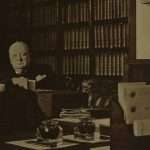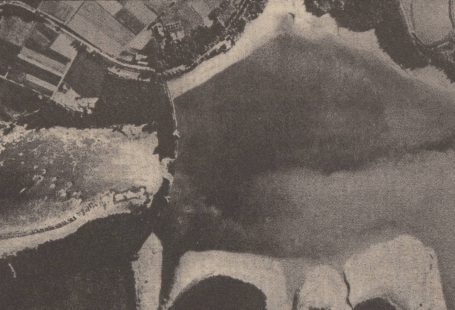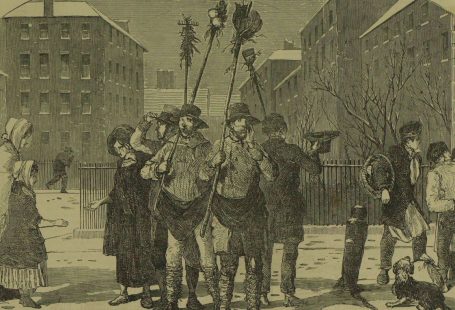‘Short hair is not a whim of fashion; it is significant for an adaptation to modern existence,’ so proclaimed hairdresser Monsieur Eugène in 1929 (Britannia and Eve, August 1929).
In this special blog, using pages from the British Newspaper Archive, we explore one of the most iconic fashions of the 1920s – the bob. We look at its cultural impact, its most famous wearers, and how women achieved and maintained the perfect bobbed style.
Want to learn more? Register now and explore The Archive
The ‘Perfect Flapper’ – Colleen Moore | The Tatler | 12 November 1924
Inspired by the likes of actresses Louise Brookes, Clara Bow, Colleen Moore and Marion Davies, soon women across the world were cutting their hair short. This was a daring challenge to the status quo, and represented an emancipation from the cultural and ideological trappings of traditional femininity.
As an article in Britannia and Eve relates in 1929, ‘When woman first turned her attention to bobbing and shingling her hair, perhaps she dispensed with a greater part of the care which her mother and grandmother took to keep their hair well brushed and combed.’
It was not just their hair that women were dispensing with. They were dispensing with tradition.
‘Yes,’ says Anthony, oracle of many of the best-coiffed Parisiennes, ‘we must admit that long hair has lived. But it is now definitely dead.’ (Britannia and Eve, August 1929)
Colleen Moore | The Sketch | 11 January 1928
A Very Modern Miss
Bobbed hair soon became synonymous with the flapper – that figure that turned on its head traditional notions of femininity. The flapper was a good time girl; she drank, she smoked, she partied and she came home late.
Here, ‘flapper-deluxe,’ Clara Bow (complete with bob) relays the five stages of drunkenness in her film ‘Dancing Mothers,’ where she gives ‘a very lively representation of a very modern miss’ (Illustrated Sporting and Dramatic News, January 1927).
Clara Bow in ‘Dancing Mothers’ | Illustrated Sporting and Dramatic News | 1 January 1927
And it wasn’t just Clara Bow who was bobbing her hair. Women everywhere were doing it. In 1923 The Sketch features a portrait of Marion Mitchell, daughter of an American oil tycoon. The accompanying text describes how Mitchell embodies ‘the piquant style for the modern maid – bobbed hair and a gown with a Victorian flavour.’

Marion Mitchell | The Sketch | 24 October 1923
Hair Wavers and Wonder Liquids
So with the bob growing in popularity, how were women to achieve the longed-for bobbed styles? The 1920s were the most inventive of decades, and newspapers of the time reveal how women were not short of tools to help them achieve their desired look.
The Tatler in 1926 advertises Hindes Hair Wavers ‘for shingled and bobbed hair’ – for ‘Nature alone won’t wave the hair, Hindes Wavers, too, must do their share.’
‘Wonder liquid’ Lavona was another Tatler-advertised product. According to the copy, ‘wavy bobbed hair makes a girl look younger and prettier, while straight, ‘wispy’ bobbed hair gives her an older, somewhat harsher appearance.’ Luckily, Lavona could work its magic to make bobbed hair ‘both lustrous and wavy.’
Hairdressers also queued to proclaim their prowess in creating the perfect bobbed cut. A bob cut could set you back 6 guineas in Harrods (The Sketch, June 1928), and was able to ‘withstand hot weather, swimming, and constant brushing and washing.’
And if you couldn’t commit to the bob, Andre Hugo in his Maison de Confiance could offer you ‘Bobbed Victors’ (Britannia and Eve, June 1929) which gave the effect of the bob, without the dramatic loss of any hair at all.
However, according to a piece in The Tatler, ‘there are many women to-day who bitterly regret the fact that their hair is bobbed, as it has lost its charm in their eyes.’ There was, rather unsurprisingly, a product that could help a woman mourning the loss of her locks. At the cost of £4 4s a ‘Platignon’ could be purchased. This was ‘cleverly shaped to the nape of the neck,’ and made it look as though the wearer was possessed of a long braid, instead of a short bob.
Whether regretted by some or not, the bob was the defining style of the decade, and is still an important influence on fashion today. Not only did it change the world of style, its wider cultural implications meant that women could enjoy greater freedoms of self-expression, whilst dispensing with all the hassles of maintaining long hair!














